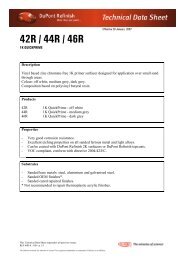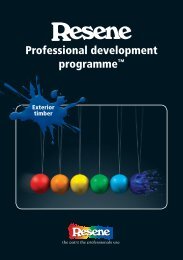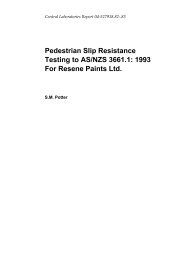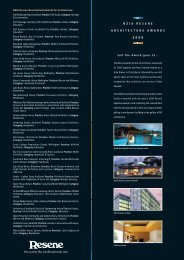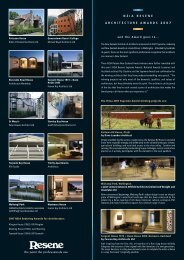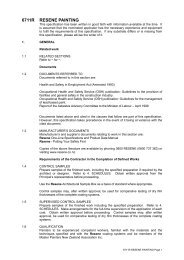13489 Habitat8 Book.indb - Resene
13489 Habitat8 Book.indb - Resene
13489 Habitat8 Book.indb - Resene
You also want an ePaper? Increase the reach of your titles
YUMPU automatically turns print PDFs into web optimized ePapers that Google loves.
order to obtain optimum insulation. There are also techniques for injecting water-resistant loose<br />
insulation or foam into holes drilled in the inner wall lining or exterior cladding. However this is<br />
less reliable because it’s hard to assess whether all the gaps have been filled. Definitely a job for<br />
the professionals.<br />
Of course, wall linings such as GIB ® Plasterboard are a key component in any insulation scheme,<br />
and if it’s noise control you’re after, GIB Noiseline ® can be used.<br />
Reflective foil is no longer used to insulate walls (it doesn’t meet minimum standards) but is still<br />
effective as underfloor insulation, particularly with blanket insulation attached. Like any insulation<br />
it needs a perfect fit for optimum effectiveness, so all gaps must be sealed. Due to the possibility of<br />
electrical cables running under the floor, the laying of foil insulation can be risky – cabling can be<br />
pierced, or if it’s incorrectly installed you may end up with a ‘live’ floor. Hire a professional installer<br />
or get an electrician to inspect it.<br />
Expanded polystyrene, which comes in rigid foam sheets, is a popular choice for under concrete<br />
floors. It’s also very multi-functional and can be used to insulate walls and ceilings. For the more<br />
rainy parts of the country, a well-vented underfloor space with an additional layer of polythene<br />
sheeting on the ground is effective at keeping dampness at bay – remember, damp under-floor<br />
timbers attract fungus.<br />
An uninsulated home will lose about 42% of its heat<br />
through the ceiling and roof, 24% through walls and<br />
12% each through windows and draughty doors.<br />
If you’re replacing old windows, think carefully about double-glazing, even if you don’t live in an<br />
area where it’s now required. In Europe it’s widely used as a form of insulation (triple glazing is<br />
fairly standard in some Scandinavian countries) and for noise reduction – you’ll find most houses<br />
by major roads in England have double-glazing.<br />
Not everyone’s budget will stretch to double-glazing, so cheaper options include the obvious,<br />
such as heavy, thermal-backed curtains that fit snugly around window frames and pelmets that<br />
reduce draughts.<br />
There’s no denying that spending money on insulation reaps many benefits. Not only will it give<br />
you a warmer, drier home with lower energy bills but it will, according to a recent Otago University<br />
study, enhance your overall health and well-being.<br />
To find out more about insulation, take a look at www.smarterhomes.org.nz, www.energywise.<br />
org.nz and www.consumerbuild.org.nz. Or for Australia, see www.greenhouse.gov.au/<br />
yourhome/.<br />
top tip<br />
Whichever type of insulation you choose, the objective is a really snug fit,<br />
because even the smallest of gaps will significantly reduce effectiveness.<br />
For really cold areas, insulate cold water pipes separately (as well as hot water<br />
pipes) with special pipe insulation.





